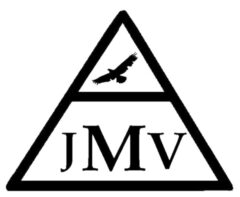M Ravi Krishna, N. Sneha
Cite
Krishna MR, Sneha N. Tracheal gas insufflation for refractory hypercapnia. J Mech Vent 2024; 5(3):109-113.
Abstract
A 65 year male patient got admitted to ICU after alleged intake of ~ 250 ml of Chlorpyrifos (Organophosphate insecticides which cause cholinergic toxidrome) and cypermethrin (Synthetic pyrethroid) and presented with cholinergic toxidrome with severe hypercapnia (supercarbia). All conventional and advanced modes of ventilation failed to ventilate the patient because of severe bronchospasm and a prolonged expiratory time constant with high airway pressures and high auto-peep. As a last resort, we resorted to unconventional modes, as the patient could not afford ECMO.
Tracheal gas insufflation was done using a coaxial flow of humidified oxygen at 8 lpm with a suction catheter and ventilator parameter were adjusted to match the added gas flows.
Tracheal gas insufflation can be delivered by a thin catheter placed through the endotracheal tube (terminating within 1 to 2 cm of the main carina) or via a modified endotracheal tube with channels embedded in the walls of the tube. Tracheal gas insufflation flow can be forward (toward the alveoli) or reversed in direction toward the proximal end of the endotracheal tube.
Keywords: TGI, Hypercapnia, organophosphate toxicity
References
| 1. Sheppard L, McGrew S, Fenske RA. Flawed analysis of an intentional human dosing study and its impact on chlorpyrifos risk assessments. Environ Int 2020; 143:105905. https://doi.org/10.1016/j.envint.2020.105905 PMid:32629200 | |||
| 2. Chung YL, Hou YC, Wang IK, et al. Organophosphate pesticides and new-onset diabetes mellitus: From molecular mechanisms to a possible therapeutic perspective. World J Diabetes 2021; 12(11):1818-1831. https://doi.org/10.4239/wjd.v12.i11.1818 PMid:34888010 PMCid:PMC8613664 | |||
| 3. Ramchandra AM, Chacko B, Victor PJ. Pyrethroid poisoning. Indian J Crit Care Med 2019; 23(Suppl 4):S267-S271. https://doi.org/10.5005/jp-journals-10071-23304 PMid:32021002 PMCid:PMC6996658 | |||
| 4. Wu YJ, Chang SS, Chen HY, et al. Human poisoning with chlorpyrifos and cypermethrin pesticide mixture: assessment of clinical outcome of cases admitted in a tertiary care hospital in taiwan. Int J Gen Med 2023; 16:4795-4804. https://doi.org/10.2147/IJGM.S432861 PMid:37908758 PMCid:PMC10614644 | |||
| 5. Nakos G, Zakinthinos S, Kotanidou A, et al. Tracheal gas insufflation reduces the tidal volume while PaCO2 is maintained constant. Intensive Care Med 1994; 20(6):407-413. https://doi.org/10.1007/BF01710650 PMid:7798444 | |||
| 6. Ravenscraft SA, Burke WC, Nahum A, et al. Tracheal gas insufflation augments CO2 clearance during mechanical ventilation. Am Rev Respir Dis 1993; 148(2):345-351. https://doi.org/10.1164/ajrccm/148.2.345 PMid:8342897 | |||
| 7. Richecoeur J, Lu Q, Vieira SRR, et al. Expiratory washout versus optimization of mechanical ventilation during permissive hypercapnia in patients with severe acute respiratory distress syndrome. Am J Respir Crit Care Med 1999;160(1):77-85. https://doi.org/10.1164/ajrccm.160.1.9809006 PMid:10390383 | |||
| 8. Kolobow T, Powers T, Mandava S, et al. Intratracheal pulmonary ventilation (ITPV): control of positive end-expiratory pressure at the level of the carina through the use of a novel ITPV catheter design. Anesth Analg 1994; 78(3):455-461. https://doi.org/10.1213/00000539-199403000-00006 PMid:8109760 | |||
| 9. Imanaka H, Kacmarek RM, Ritz R, et al. Tracheal gas insufflation-pressure control versus volume control ventilation. A lung model study. Am J Respir Crit Care Med 1996; 153(3):1019-1024. https://doi.org/10.1164/ajrccm.153.3.8630540 PMid:8630540 | |||
| 10. Gowski DT, Delgado E, Miro AM, et al. Tracheal gas insufflation during pressure-control ventilation: effect of using a pressure relief valve. Crit Care Med 1997; 25(1):145-152. https://doi.org/10.1097/00003246-199701000-00027 PMid:8989191 | |||
| 11. Delgado E, Hete B, Hoffman LA, et al. Effects of continuous, expiratory, reverse, and bi-directional tracheal gas insufflation in conjunction with a flow relief valve on delivered tidal volume, total positive end-expiratory pressure, and carbon dioxide elimination: a bench study. Respir Care 2001; 46(6):577-585. |
